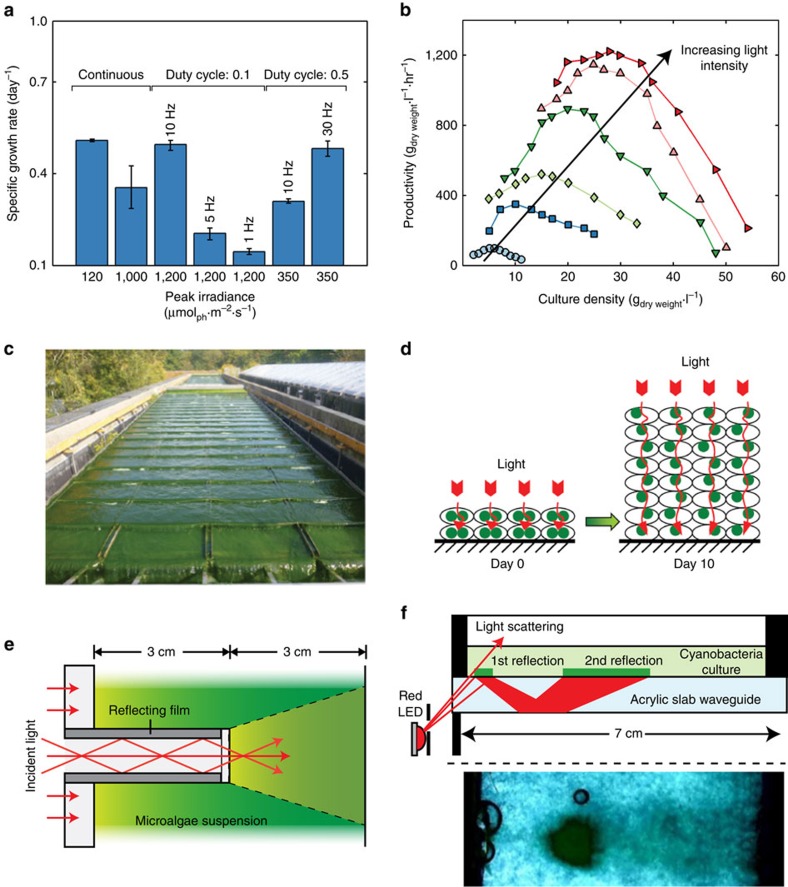Figure 5. Managing light distribution.
(a) Effects of pulsed light on the specific growth rate of Nannochloropsis. The duty cycles (fraction of time the light is on in a given cycle) for 1,200 μmolph m−2 s−1 and 350 μmolph m−2 s−1 pulsed light is 0.1 and 0.5 to achieve an equivalent time-averaged intensity with continuous light at 120 μmolph m−2 s−1. (b) Graph showing the optimal culture density under different light irradiances (circles—270 μmolph m−2 s−1, squares—740 μmolph m−2 s−1, diamonds—1,200 μmolph m−2 s−1, downwards triangle—2,000 μmolph m−2 s−1, upwards triangle—6,000 μmolph m−2 s−1, rightward triangle, 8,000 μmolph m−2 s−1). (c) Short-light-path cascade photobioreactor for high-density outdoor cultivation. (d) Schematic showing how cells in biofilms adapt to high-intensity light by reducing their concentration of light-absorbing pigments. This reduction in pigment concentration results in a more transparent biofilm which allows light to penetrate deeper allowing the biofilm to grow thicker and support more cells. (e) Schematic showing how light guiding elements can be used to increase the illuminated surface area to volume ratio inside of photobioreactors, reducing the irradiance seen by the culture below the saturation intensity. (f) Schematic of micro-scaled light delivery through waveguides to attached biofilms. Light from an LED is coupled into a slab waveguide and undergoes total internal reflection. Where cells are present on the waveguide surface, light can be scattered out or coupled directly into the photosynthetic apparatus, driving photosynthesis. The inset below shows experimental growth patterns achieved using this design. (a) Adapted from ref. 67, (b) adapted from ref. 72 with permission from Taylor&Francis Ltd, (c) reproduced from ref. 73 with permission from Elsevier, (d) reproduced from ref. 79, copyright Wang et al.; licensee BioMed Central 2015, (e) adapted from ref. 84 with permission from Elsevier, (f) adapted with permission from ref. 86, copyright 2014 IOP Publishing Ltd.

